16 Surprising Behind-the-Scenes Facts About My Fair Lady
- Oops!Something went wrong.Please try again later.
- Oops!Something went wrong.Please try again later.
- Oops!Something went wrong.Please try again later.
- Oops!Something went wrong.Please try again later.
- Oops!Something went wrong.Please try again later.
In the pantheon of classic cinema, certain films stand out as masterpieces that transcend time and genre. My Fair Lady, released in 1964, is undeniably one of these gems. Adapted from George Bernard Shaw's play Pygmalion and directed by George Cukor, this musical extravaganza captured the hearts of audiences with its captivating storyline, unforgettable characters, and timeless music.
At its core, My Fair Lady tells the story of Eliza Doolittle, a Cockney flower girl with dreams of a better life; and Professor Henry Higgins, a phonetics expert with a penchant for transforming lives. Set in London, the film follows Higgins as he makes a wager with his friend Colonel Pickering that he can pass Eliza off as a refined lady by teaching her proper speech and manners. What ensues is a journey of self-discovery, transformation, and unexpected romance as Eliza navigates the complexities of high society while struggling to retain her sense of self.
In terms of casting, the film struck gold with the dynamic duo of Audrey Hepburn and Rex Harrison in the lead roles of Eliza Doolittle and Professor Henry Higgins. Their on-screen chemistry and impeccable performances brought the characters to life in a way that captivated audiences and solidified their places in cinematic history.
However, there are many surprising facts behind the scenes of My Fair Lady, which are shared below.
MUST-READ: 1964 Movies — 15 Classic Films Turning 60 and Where to Stream Them
1. The Hepburn / Andrews controversy
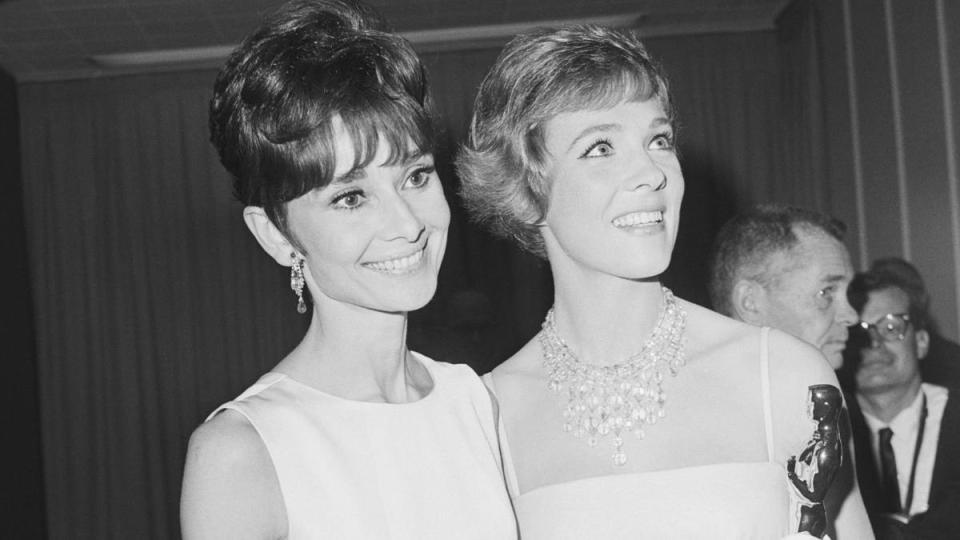
Bettmann / Contributor/Getty
The part of Eliza Doolittle was originally played on Broadway by Julie Andrews. However, she was not offered the movie role because producer Jack L. Warner didn't think she was well-known enough as a movie actress. Many felt that this snub, as well as Audrey Hepburn's singing being dubbed, led to Hepburn's not being nominated for the Best Actress Oscar nomination that year. Ironically, Andrews was nominated for her leading role in Walt Disney's Mary Poppins (1964). Andrews went on to win the Oscar for Best Actress and "thanked" Jack L. Warner in her acceptance speech.
Hepburn apparently believed that Andrews should have played Eliza Doolittle in this movie, but was told by Warner that she wouldn't be cast even if Hepburn turned down the role. Both Andrews and Hepburn said the two women got along well and there was no animosity or jealously between them.
2. Dubbing Hepburn’s voice
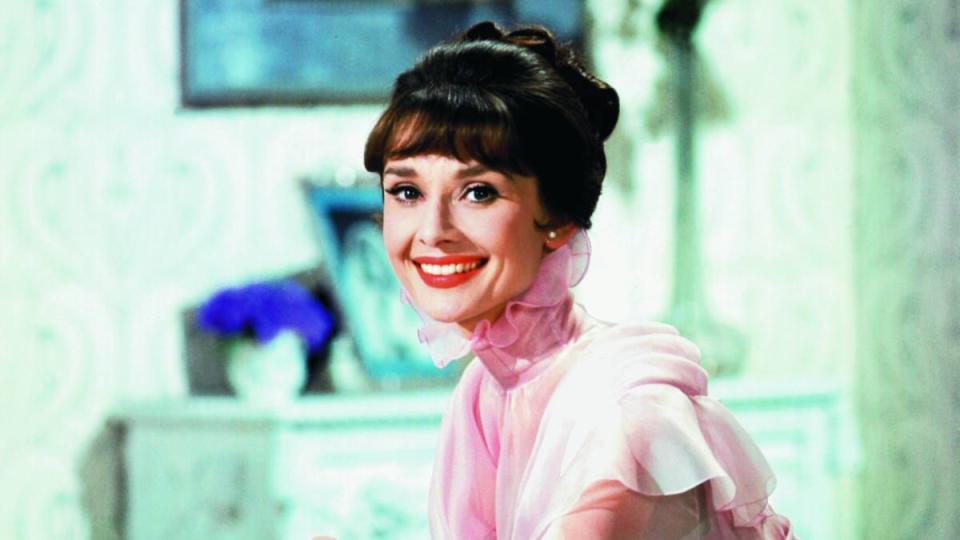
moviestillsdb.com/Paramount Pictures
About 90 percent of Hepburn’s singing in My Fair Lady was dubbed by Marni Nixon. That was actually far more than Hepburn expected, as she was initially promised that most of her vocals would be presented. Hepburn later admitted she would never have accepted the role of Eliza Doolittle if she had known that Warner intended to have nearly all of her singing recorded by Nixon. After making this movie, Hepburn resolved not to appear in another movie musical unless she could do the singing herself.
MUST READ: Jane Birkin Movies: A Look at the Actress Who Defined ’60s French Girl Chic
3. My Fair Lady was very expensive to make
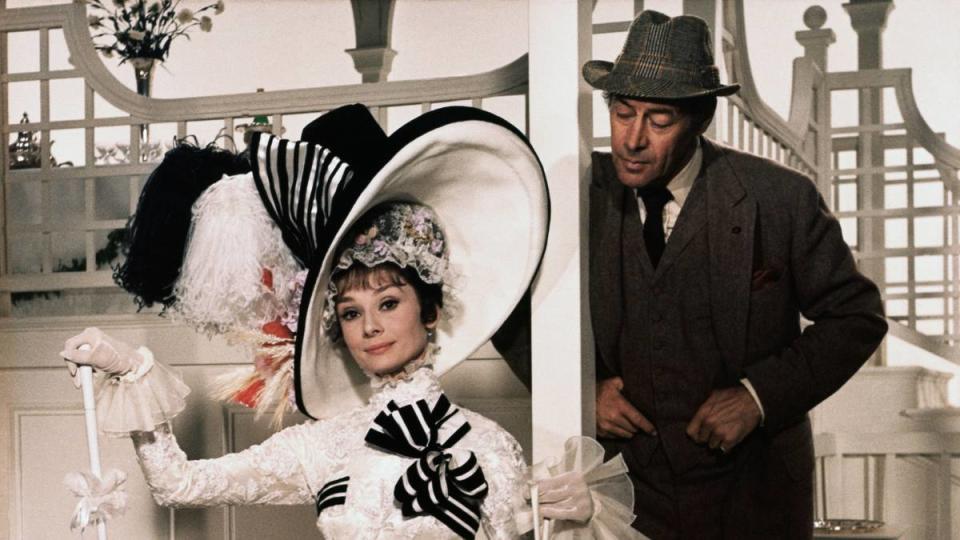
moviestillsdb.com/Paramount Pictures
Producer Jack L. Warner paid $5.5 million for the movie rights of My Fair Lady. This set a record for the amount of money paid for the movie rights to any intellectual property, broken when Columbia Pictures paid $9.5 million for the movie rights to Annie. But the $5.5 million was only for the rights — My Fair Lady cost $17 million to produce.
4. The connection between My Fair Lady and Family Guy
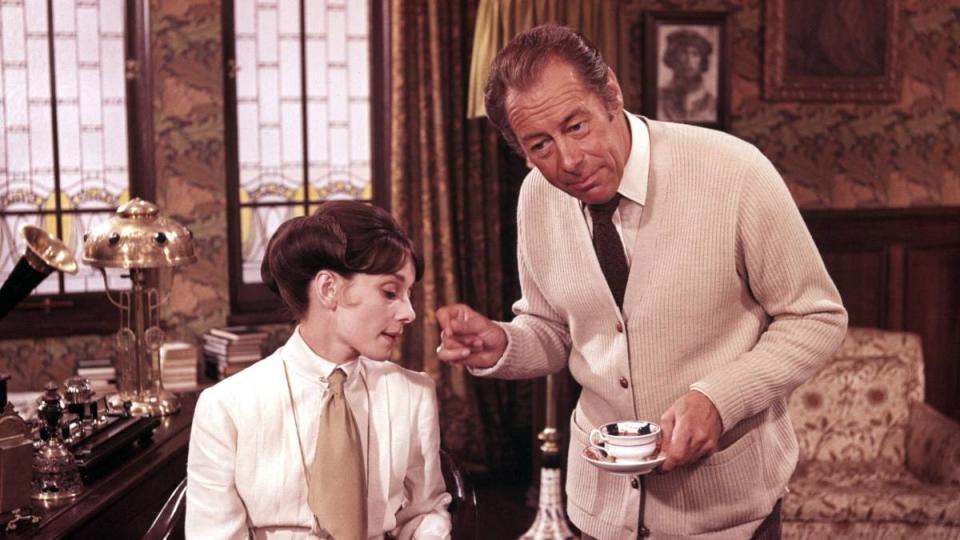
moviestillsdb.com/Paramount Pictures
Seth MacFarlane, who created the Family Guy animated series, said that the voice of Stewie was based on Sir Rex Harrison's performance as Professor Henry Higgins in My Fair Lady.
MUST READ: Jerry Mathers Remembers ‘Leave It to Beaver,’ His Co-Stars and More (EXCLUSIVE)
5. The title came from a nursey rhyme

moviestillsdb.com/Paramount Pictures
The play that it was based on was called Pygmalion, but that was determined not fitting for a movie. Instead, the final movie title is derived from a line in a traditional rhyme: "London Bridge is falling down, my fair lady."
6. There were many (so many) costumes designed for My Fair Lady
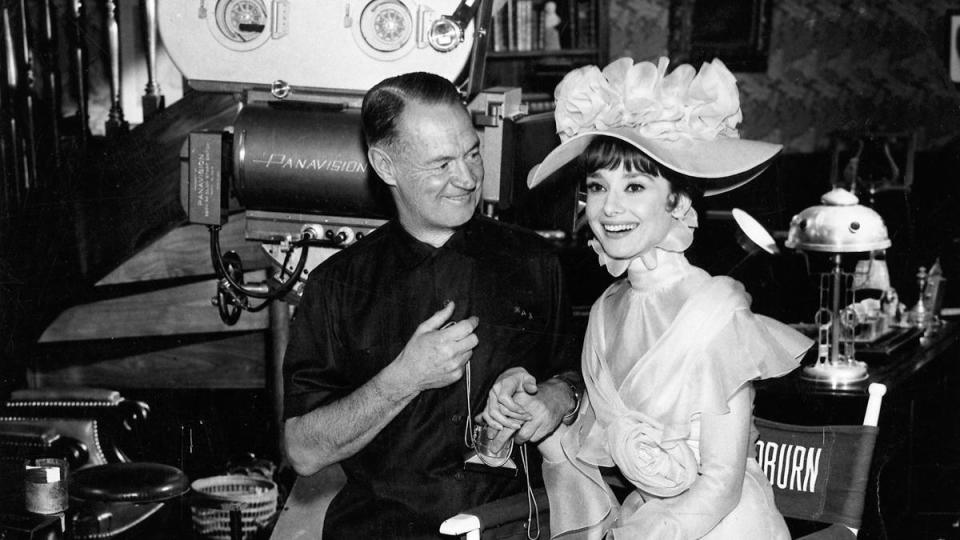
moviestillsdb.com/Paramount Pictures
Costume designer Cecil Beaton reputedly created 1,500 costumes for My Fair Lady. In 2011, Eliza Doolittle's black-and-white royal ascot costume sold at auction for $4.5 million.
MUST READ: Commence Mission: Learn About the Original ‘Mission: Impossible’ Cast Now!
7. And the Oscar goes to…
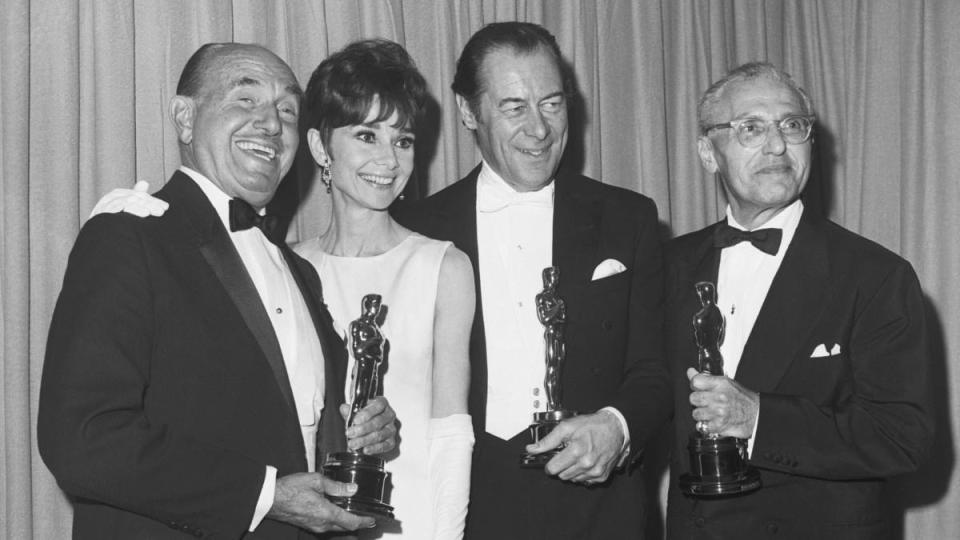
Bettmann / Contributor/Getty
Audrey Hepburn's failure to win an Oscar nomination was considered a major upset, triggering protests from Warner Brothers and director George Cukor. She rose above the snub, however, when the Academy invited her to present the Best Actor award, which went to co-star Sir Rex Harrison. In accepting the award, Harrison thanked "two fair ladies" — Audrey Hepburn and Julie Andrews (who originated the role on Broadway).
8. Improvising props
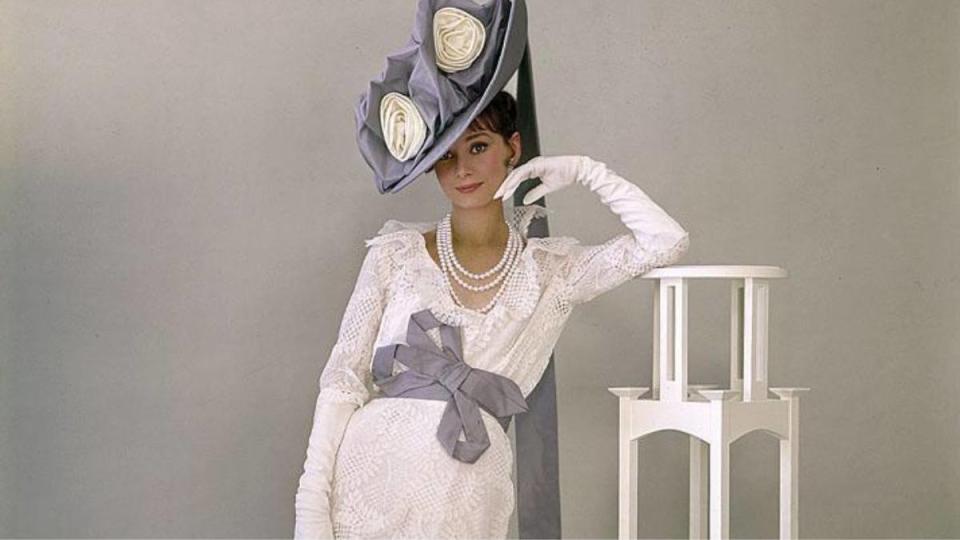
moviestillsdb.com/Paramount Pictures
The "marbles" Professor Henry Higgins (Rex Harrison) puts in Eliza Doolittle's (Audrey Hepburn's) mouth are actually grapes.
MUST READ: ‘That Girl’ Cast: A Look Back at the Groundbreaking ’60s Sitcom
9. Cary Grant was almost in My Fair Lady
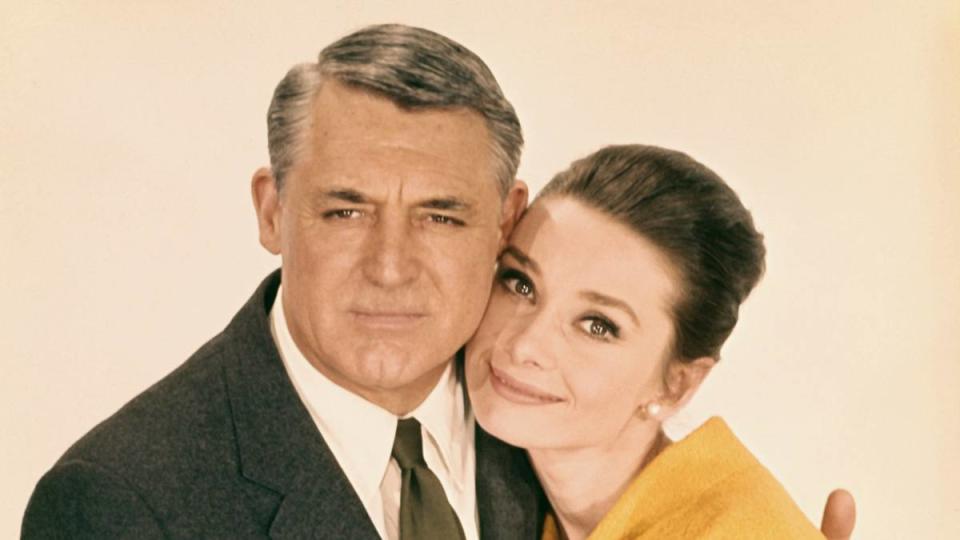
Screen Archives / Contributor/Getty
When asked why he turned down the role of Professor Henry Higgins, Cary Grant remarked that his original manner of speaking was much closer to Eliza Doolittle's.
10. A hefty price tag for restoration
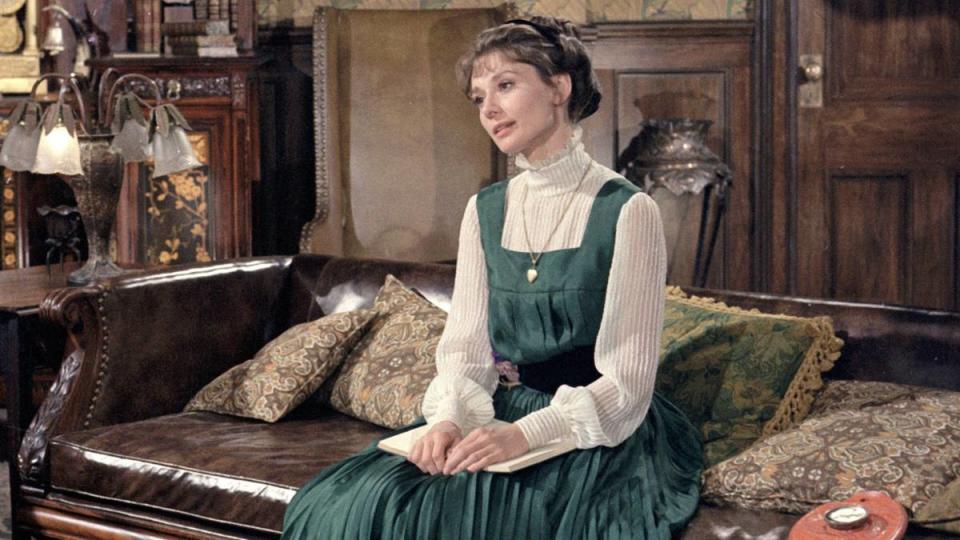
moviestillsdb.com/Paramount Pictures
For its 30th anniversary re-release in 1994, My Fair Lady was painstakingly restored by Robert A. Harris and James C. Katz, the same team that restored Vertigo (1958), Lawrence of Arabia (1962) and Spartacus (1960). The restoration was needed because Warner Brothers only owned the rights to the movie for a certain period of time before the rights reverted to CBS. The digital restoration saved it from extinction, took six months and cost $600,000.
MUST READ: ‘Flintstones’ Characters: The Inside Scoop on Fred, Barney, Wilma and Betty
11. Henry Higgins voice in My Fair Lady

moviestillsdb.com/Paramount Pictures
Despite extensive vocal training after landing the part of Professor Henry Higgins in this movie, Rex Harrison was unable to sing. In the end, director George Cukor gave up and told him to quasi-speak the whole thing as he had done in the stage version.
12. Hepburn was sick on set
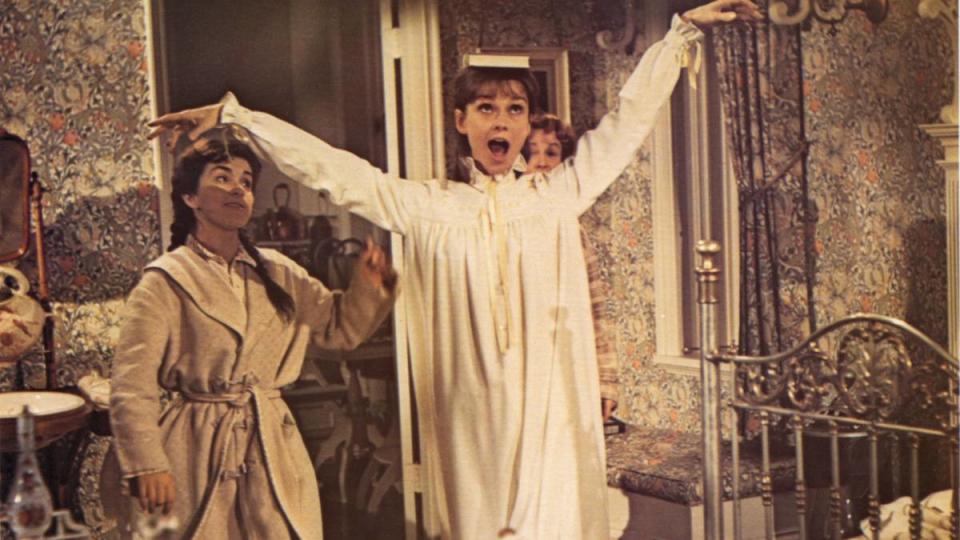
moviestillsdb.com/Paramount Pictures
The shoot was unusually exhausting for Audrey Hepburn, who lost eight pounds during filming. Her work was intensified by marital problems with husband Mel Ferrer, who was playing a supporting role in Sex and the Single Girl (1964) on the Warner Brothers' lot. Director George Cukor had to shoot around her for a week while she was sick. Separately, it was rumored that Audrey Hepburn smoked three packs of cigarettes a day during the filming.
MUST READ: Hugh Beaumont — Get to Know the Dad From ‘Leave It to Beaver’
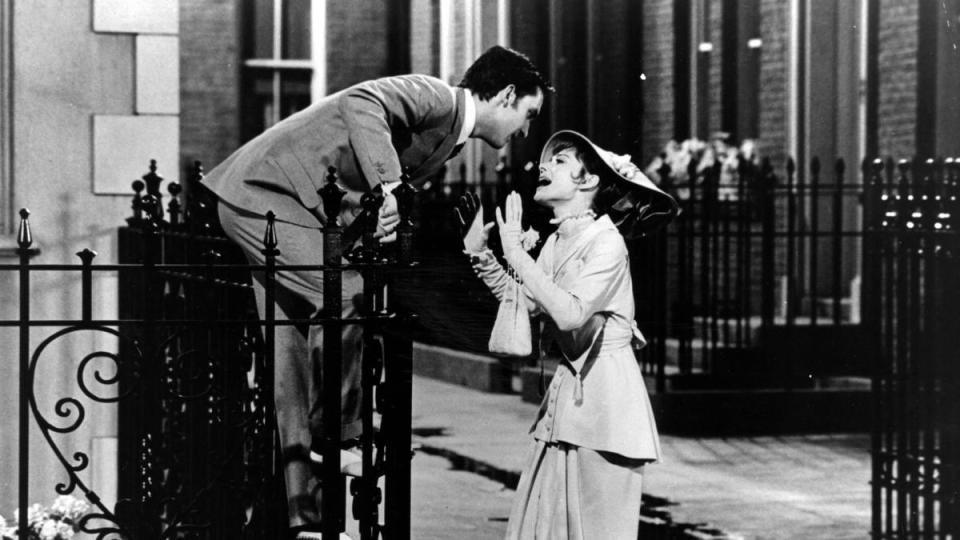
moviestillsdb.com/Paramount Pictures
Although she played a 21-year-old Eliza, Audrey Hepburn was actually 35 years old in real life. Jeremy Brett (who turned 30 during filming) was cast as 20-year-old Freddy Eynsford-Hill, so Hepburn would not seem too old in comparison.
14. Shooting chronologically
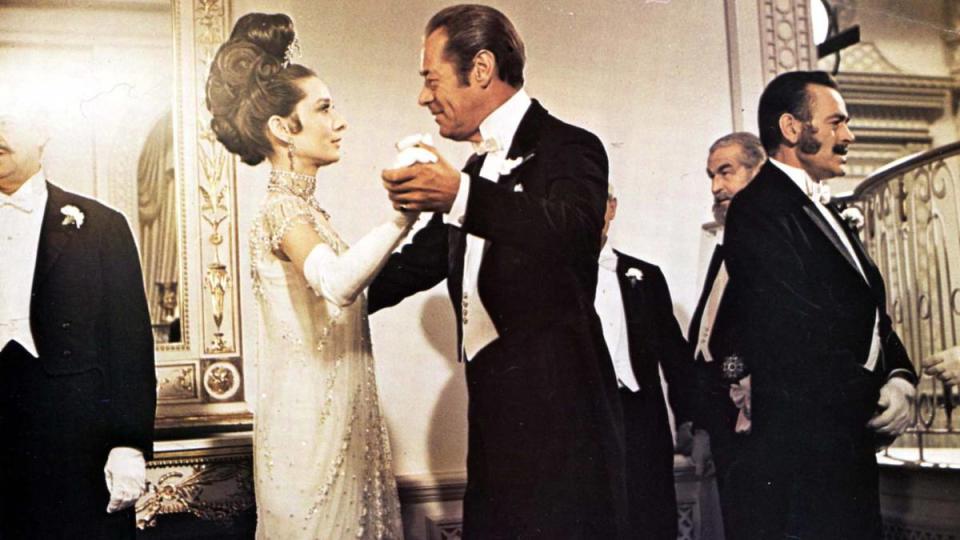
moviestillsdb.com/Paramount Pictures
At Audrey Hepburn's insistence, director George Cukor shot all of her scenes in sequence so that she could grow into the role and hold her own against Rex Harrison and Stanley Holloway, who had both done the play for several years. It also allowed her to do the most difficult scenes first, those before Eliza's transformation, while she was still fresh.
MUST READ: 10 Funny and Moving Behind-the-Scenes Secrets About the Original TV ‘Star Trek’
15. Harrison wasn’t the first choice for Professor Higgins
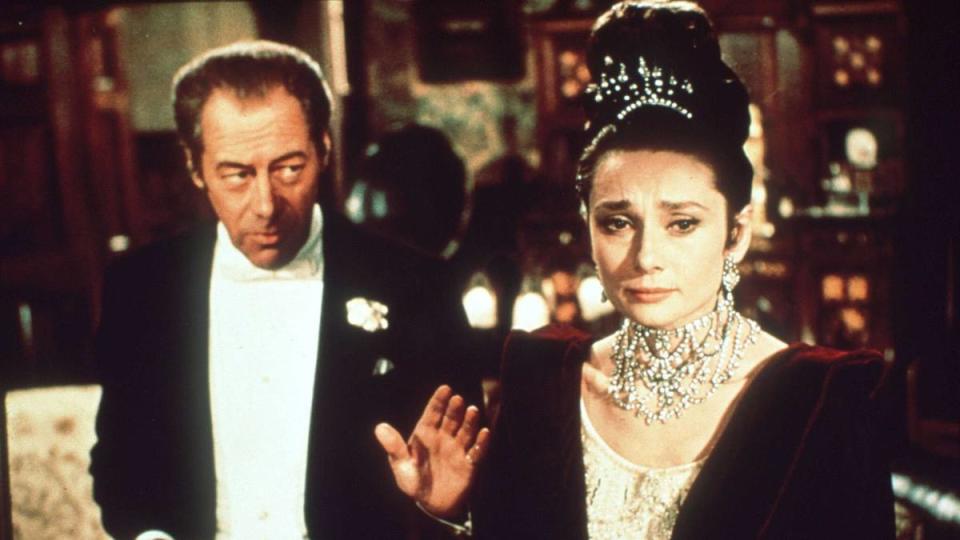
moviestillsdb.com/Paramount Pictures
At one stage, Warner Brothers was in negotiations with Peter O'Toole, extremely hot after his Lawrence of Arabia (1962) success, but his agents were looking for $400,000. Producer Jack L. Warner hadn't been keen on casting Sir Rex Harrison, but he was able to get Harrison for just $200,000. This greatly annoyed Harrison, particularly since Audrey Hepburn was being paid $1 million, and especially since Harrison eventually won an Oscar for his efforts while Hepburn most famously didn't.
Additionally, even though Harrison was desperate to be cast as Professor Higgins, he refused to do a screentest since he felt this was beneath his dignity. He did, however, promise Warner that he would not simply repeat his stage performance, but would instead adapt his performance accordingly for the movie.
16. Design costs
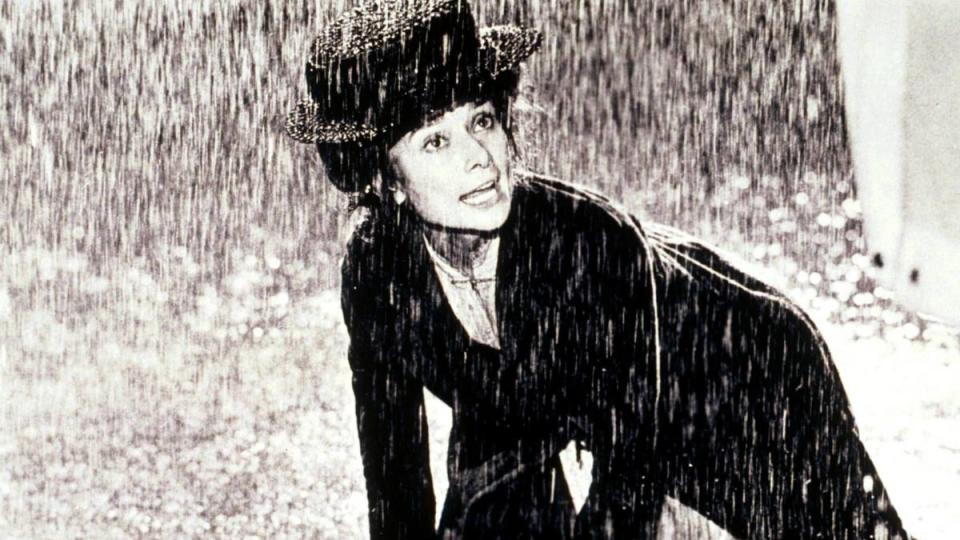
moviestillsdb.com/Paramount Pictures
Production designer Gene Allen was never given a budget with which to work, so he just designed and had built all of the sets without having to worry about how much they cost.
MUST READ: Rolling Stones Songs: 15 of Their Most Rockin’ and Iconic Hits, Ranked
For all things 1960's, click here!

